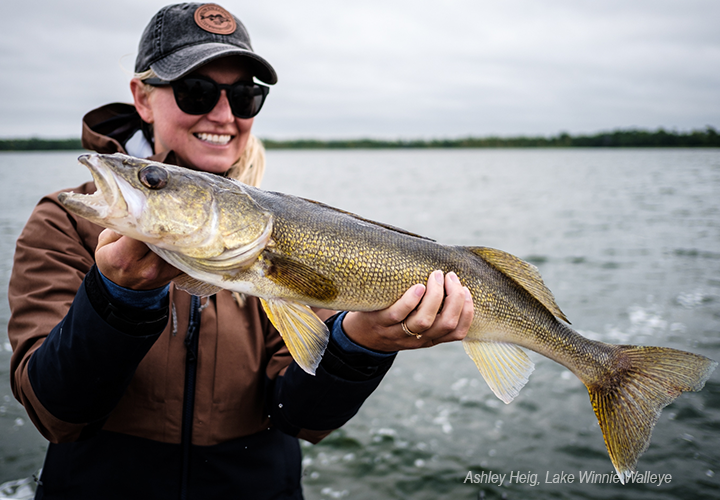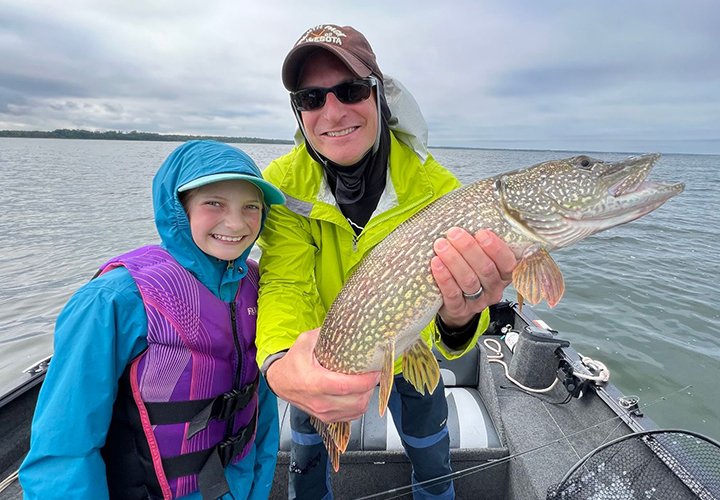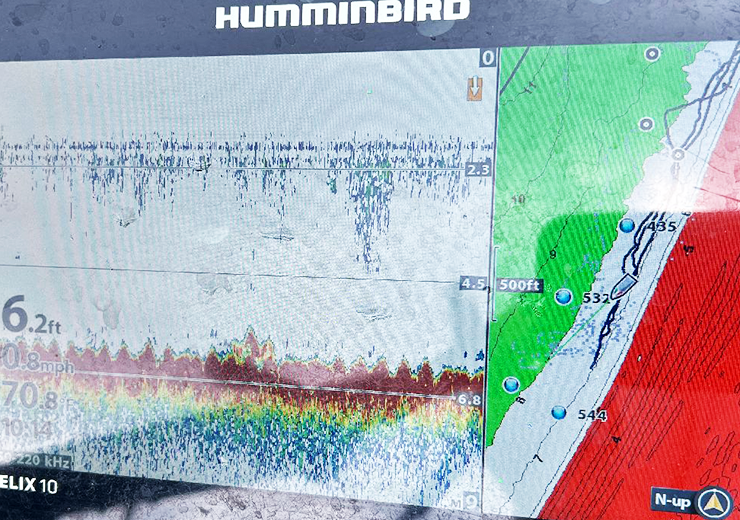Lake Winnibigoshish Cutfoot Sioux Fishing Report – September 29, 2022
Any mystery about when the first frost will hit Lake Winnie and Cutfoot Sioux has been solved. The first dive into sub-freezing air temperatures hit on Monday night, then widespread frost occurred in our area overnight Wednesday and into Thursday morning.
Ashley Heig, Lake Winnie Walleye
Those frosty temperatures sent surface water temperatures on a fast dive into the mid-to-low 50s. On Wednesday, most areas of Lake Winnie registered 57 to 58 degrees. Cutfoot Sioux was more variable, with temperatures ranging between 51 degrees and 60 degrees depending on the water depth.
The cold water has not affected walleye temperament, by all accounts, walleye activity remains strong. Walleye location, on the other hand, does appear to have undergone some transformation. Anglers who had become “locked in” to fishing territories and patterns that were reliable last week, found few, if any walleyes using them during post cold front, Tuesday, and Wednesday. But as is usually the case during fall, anglers who explored fresh territory, searching for schools of migratory fish were rewarded with awesome catches.
Overall, the best depth ranges to focus on are the breaks from 6 to 8 feet, the 10-to-12-foot breaks and the 16-to-24-foot ones. Check enough spots in these depth ranges and it is just a matter of time, you will locate a school of walleyes.
For now, the secret to locating most schools of migratory walleyes depends on locating shoreline structure with high concentrations of baitfish. Small, 1 to 1-1/2-inch-long perch are the primary food source and these have been forced out of the shallowest water, now residing in short, fine grasses that cover the lakes bottom.
Grasses line Chara and we suspect, but have not confirmed, Stary Stonewort are not thick enough to provide cover for large gamefish, but they do provide ideal hiding spots of small minnows and young of the year gamefish. Areas like these are widespread on the big lake and scanning water depths of 6 to 12 feet will reveal them. On the screen of your graph, they will look like a fine carpet rising from the bottom. Clouds of “bait food” can easily be seen on your electronics hovering over the fine grasses.
Anglers who have fished these areas know too, that an easy way to locate the hairy habitat is with their fishing lures. A jig and minnow fished on or near the bottom will snag them frequently, sometimes too often. Jig and minnow combinations, the most popular fall presentation on both Cutfoot and Winnie, can be frustrating to use over these fine grasses.
Fine grasses can foul your lures, switch to lightweight 1/16 ounce jigs and pop-wiggle-pop over the tops.
One of our favorite local guides suggests avoiding “heavy” jig heads and replacing them with lighter ones. “A 1/16-ounce jig head, tipped with a large fathead, rainbow of lake shiner, and fished with a pop-wiggle-pop motion will swim up and over the tips of the grass. You won’t feel the bottom, but they will get you there, even on windy days. You can control your depth by controlling your boat speed, this is the key.” He tells us. Ideally, speeds of .6 to .8 MPH would be best, but even speeds up to 1.0 MPH will work.
Spinners tipped with minnows and crankbaits are producing some fish too, but these faster moving presentations have taken the back seat in terms of effectiveness. That said, spinners trolled behind lightweight bullet sinkers, 1/8-to-3/16-ounce sizes, will keep you out of the grass too. Just don’t expect the spinners to keep pace with the jigging presentations.
The migratory trigger, falling water temperatures, extended not only to walleye but crappies, sunfish, and perch as well. Folks who have been chomping at the bit to get in on some of Cutfoot’s fall crappie fishing or jumbo perch on Lake Winnie are now reporting an uptick in the action. The sudden onset of cold temperatures usually shakes up the ecosystem at first and forces a short-term slowdown in panfish activity. But after the lakes settle in, panfish begin forming tighter schools that inhabit a wider array of open water territories.
Crappies in the early stages of fall migrations are using steep breaklines with immediate access to deep water. Best are the ones located near shore and feature inside corners, like the one you see here, especially ones that occur near weedy flats will be the first productive spots. Later, crappies will move further and further out, forming larger schools over the lake’s main basin.
Steep “inside turns” in the breakline are key crappie locations during early fall.
Don’t arrive with elevated expectations about finding huge schools of fish. Crappie populations are at a low ebb in both Cutfoot and Little Cutfoot and anglers have struggled over most of the summer. Still, there are some fish out there, so you’ll likely find a few for a meal.
Folks are beginning to realize the adverse impact of targeting crappies in deep water. If you love fishing crappies in deep, open water during fall, please bear in mind that most fish caught in water depths over 25 feet are not releasable. Fish caught deeper, 30 feet plus for example, will almost certainly parish. Catch a few fish that are destined for the frying pan, and then move on to another, shallower water species for your “catch and release” fishing.
Jumbo perch are active now, especially on the big lake, but have not been found in larger schools. Targeting perch does not seem to improve the odds of catching more of them. The best catches are still made by walleye anglers using jig and minnow combinations and drifting through small packs of perch encountered along the way. Size structure is good though, so a dozen perch mixed in with your walleye catch is a real bonus.
Northern pike, especially larger ones have moved away from the shoreline and into open water. Tullibee will begin staging along the shoreline soon and that will bring in more, larger pike. In the meantime, target the better size pike by fishing steep breaklines on the lake’s largest bars. Live minnows fished on Lindy Rigs or suspended below slip floats will be reliable. So will trolling larger crankbaits along the outer edges of the steep breaks.
Transitions between seasons is not unique to the fish. As September ends, we await the arrival of guests who will focus on hunting, not fishing. The mixture of fishing and hunting interests makes fall an interesting time, it’s a hectic one too. But we’re still here and we’ll stay on top of the transition into fall, and let you know whenever there are significant changes in patterns or presentations. Enjoy your time outdoors and good luck.


















